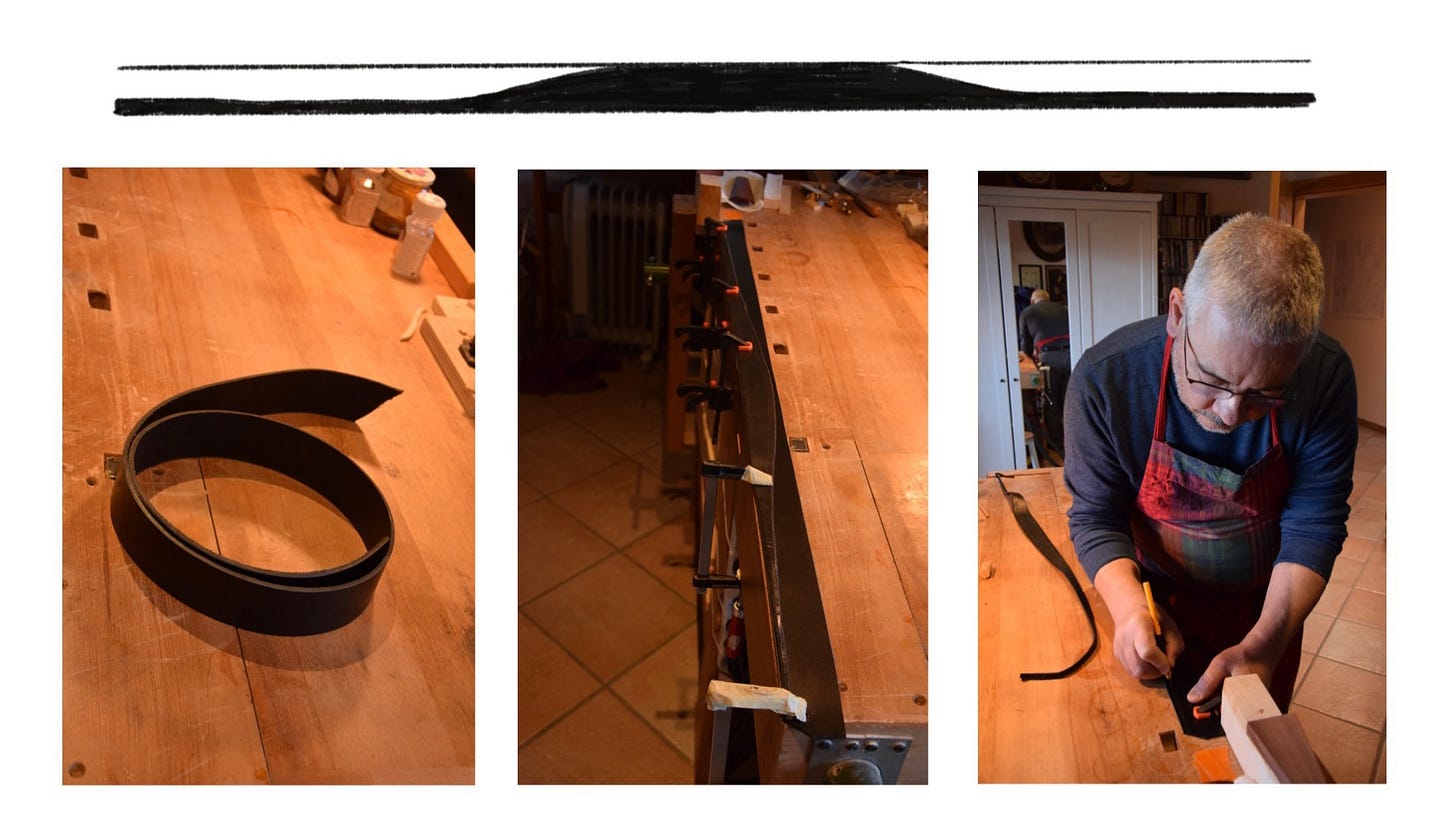1. Take a leather stripe about 5mm thick, 4 cm wide and no less than 130 cm long that you can typically find at a shoemaker shop. What they use to make belts will be perfect.
2. Draw the outline on it: in the centre, it must be wide about 4 cm to be comfortable, for a length of about 40 cm, then it must taper down to a tiny strap, no more than 7 mm wide at the tailpiece and no more than 1 cm at the fingerboard. The tiny lace parts should be about 30 cm long.
3. Cut it with a well-sharpened knife or a cutter.
4. At the fingerboard side, open the end at half of its thickness, for about 1cm.
5. Take a tiny piece of leather and cut a wedge from it so that you can insert it into the opened end
6. Glue it inside
7. If you like, apply your decoration with a decorative punch (you can find different styles on eBay or in bijoux hardware shops)
8. Fix the tailpiece part with a knot below the tailpiece string or at the button if you have a groove for it
9. The thickened part should easily pass below the fingerboard (now you know why it has that cut below) and remain fixed there.
There are different ways to wear it. You need to try to find which is the most comfortable for you. I show here those that I know. If you find something else, please share it in the comments below.
If you want to try my way, follow the instructions below. Especially if you wear glasses, pay attention to turn your head left when getting your head in the strap, or you will smash your glasses against the back of the instrument, potentially damaging your nose, the glasses and the back of the instrument!
Of course, this leather strap is not the only way to go. You can practice and learn to do without (in the pic below, Susanne Scholz -whom we warmly thank for having tried our first cello and also for having addressed us to the Wagner-, playing freely and comfortable without any strap). Or, you may opt for a simple and charming silk scarf, as Mark Wickersham does.
Koji Otsuki uses a cork to fix his strap’s length firmly at the fingerboard. He attached to the ends of his strap a soft, thinner strap of leather to go into the cork and below the tailpiece string.
Both Mark and Koji refer to these ways as very practical when you need to adjust the length fast when you are performing. While with my method, you can adjust the length only by tightening the knot at the tailpiece. So, something to consider if you are a man and you perform in an official concert suit which may be bulkier.
News from da Spalla world
Free online live workshop with Sergey Malov, April 15th, dedicated to the Violoncello da Spalla mastery.
Hosted by Dmitry Badiarov, sign up if you’d like to get notified by email: https://luthiersandlegacy.com/vds-live
or simply show up in the Da Spalla Community Facebook group, on the 15th of April, at 15 Amsterdam time (if you are not in the group, remember to ask for admission a bit before!)
If you are in Japan, you may like to attend a concert (a real concert! with people! lucky you!). I paste here the poster because I can't read Japanese, sorry! You can reserve your place writing at
liuteriatakumi@gmail.com
Updates from our workshop
While the instruments that accompanied us during the winter are getting a bit aged and rested before the final run, we are facing a new start: making some design adjustments following the wishes of the customer, and joining plates!
Featured video of the week
In this video, you see demonstrated the charming and historically informed strap used by Mark Wickersham, at the Celtic Roots Festival in Lawrence, Kansas.













